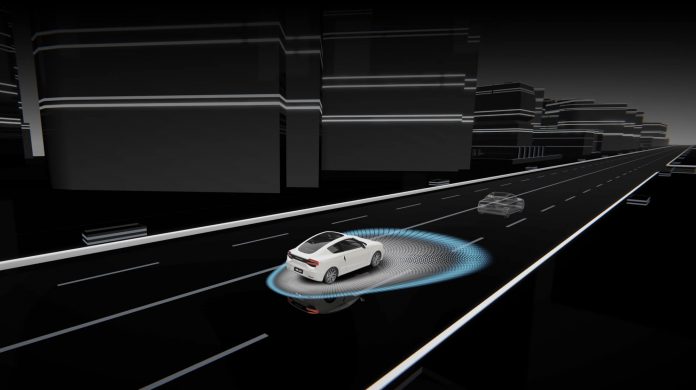In 2021, ultrasonic radar shipments hit 100 million units, and intelligent parking became a crucial engine.
1. In 2025, China’s ultrasonic radar installations will exceed 140 million units.
According to ResearchInChina, in 2021 China’s ultrasonic radar installations in passenger cars jumped by 11.8% on the previous year to 97.138 million units, a figure projected to be more than 100 million units in 2022 and exceed 140 million units in 2025.

By auto brand in China, the installations of joint venture brands were higher than local brands, but from growth momentum, homegrown brands gained the upper hand.
In 2021, joint venture brands in China installed 59.427 million ultrasonic radars in their passenger cars, 1.6 times more than local brands (37.711 million units). In growth rate’s terms, the installations of local brands surged by 35.7% from a year earlier, compared with joint venture brands (a tiny 0.6%).

2. Advanced automated parking solutions will be the main application scenario of ultrasonic radars.
As L2+ automated driving develops, parking solutions including parking assist (e.g., ultrasonic radar-only, ultrasonic radar + surround view camera, ultrasonic radar + rear view camera, rear view/surround view camera, etc.), automated parking assist (APA), remote parking assist (RPA), and automated valet parking (AVP) are being mounted on new vehicles in China.
In 2021, in China the brands that equipped their new vehicle models with APA (including integrated APA) contained Haval, Geely and Lynk & Co; the RPA-enabled brands incorporated Changan Automobile, ARCFOX and WEY. In addition, Xpeng Motors, Hongqi, Weltmeister, and NIO were the first ones to deploy AVP solutions.

Our statistics show that in 2021, there were 1.787 million passenger cars equipped with the APA function in China, or 8.8% of the total; 432,000 passenger cars packed the integrated APA capability, accounting for 2.1%; 206,000 passenger cars, or 0.1% of the total, carried the RPA function.
3. Suppliers: Valeo and Bosch are leaders, and local players rise swiftly to prominence
Tier 1 suppliers such as Valeo and Bosch are monopolies in the Chinese ultrasonic radar market, of which Bosch already has 6 generations of ultrasonic radar products used in such scenarios as parking assist, side distance warning, side assistance, and emergency braking at low speeds.
In the parking field, Bosch has mass-produced APA, RPA and AVP solutions among others. Wherein, the RPA solution has been applied to production models such as Aion V and ARCFOX αT; AVP has been first available to New Mercedes-Benz S-Class, a production sedan.
Among local companies in China, Audiowell, Shenzhen Longhorn Automotive Electronic Equipment, Coligen, TungThih Electronic and Zongmu Technology are at the leading edge. Thereof, Audiowell’s vehicle ultrasonic radars have undergone 4 iterations, and its fourth-generation AK2 ultrasonic radar core was unveiled in 2021, the up-to-date technology that enables L2+ AVP automated driving capability following UPA and APA. Audiowell also got the investment from Desay SV in 2021 and successfully went public on June 14, 2022.
As well as Audiowell, SOFTEC, Coligen, and Forvision (ThunderSoft acquired 51.48% of its shares in 2021) have also launched AK2 series ultrasonic radars, some of which have been produced in quantities.
As intelligent parking solutions like Home-AVP and AVP come out, independent controllers can no longer meet the existing needs, and the parking domain begins to integrate into the autonomous driving domain. On this basis, the driving and parking integrated solutions come into being.
So far, quite a few companies in China including Neusoft Reach, Desay SV, Freetech and iMotion have rolled out their driving and parking integrated solutions, and have secured designated OEM orders for production vehicle models.
Desay SV IPU03 domain controller having been used in Xpeng P7, enables driving and parking integration, and supports on/off-ramp and automatic lane change in highway scenarios, automatic follow in urban traffic jams, and automated parking and valet parking in low-speed scenarios.

